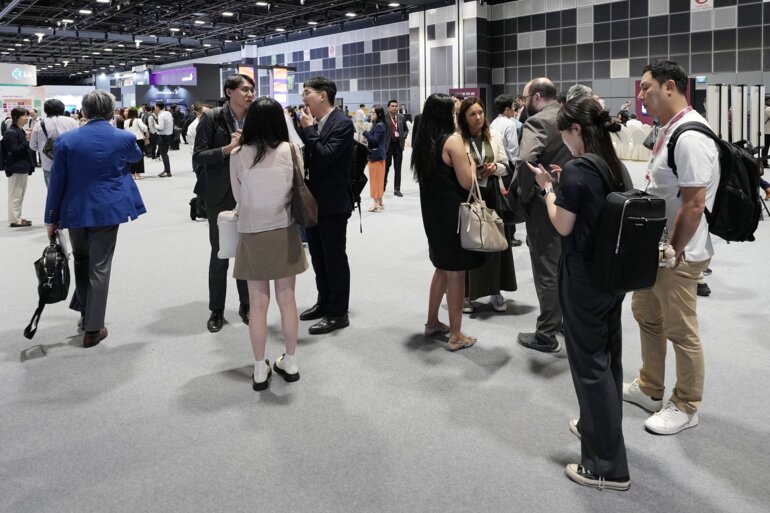With cancer medicine expenditure in Europe increasing from 12% to 31% of the overall cancer healthcare expenditure in the 13 years up to 2018 – from €10 billion in 2005 to €32 billion in 2018 – the debate on how much it costs to develop a new compound is gaining momentum. At ESMO Virtual Congress 2020, a few studies looked more closely at the actual costs of research and development (R&D), the risks involved in the development of new anticancer medicines, and the price disparities between Europe and the USA that may affect accessibility to high-quality treatments to patients globally.
A systematic literature review determined that cancer medicines incurred the highest R&D costs of all therapy areas, averaging between US$944 million and US$4,539 million, according to 2019 prices (Abstract 1587MO). This compares with US$161 million for the lowest-cost non-cancer medicine identified from a systematic literature review of R&D costs of 45 medicines. The authors warned that the reliability of the study findings was reduced owing to large differences in the methods employed for cost estimates.
Although the pharmaceutical industry generally argues that the high price of new medicines reflects the high R&D costs and the high risks involved in the process, for Dr Bishal Gyawali from Queen’s University, Kingston, Canada, this study highlights a lack of transparency when evaluating these costs: “There is a need for the pharmaceutical industry to be clear about the pre-launch costs incurred prior to bringing a drug to market. A recently published study shows the discrepancy between risk-adjusted investment costs and income made from sales by pharmaceutical companies: for every US$1 spent on R&D there was a median income return of US$14.50.” Gyawali believes that an important step forward will stem from Italy, which recently became the first country to require pharmaceutical companies the actual R&D costs for each medicine that reaches the market. The country decision aligned with the WHO Resolution on the Transparency of drug pricing, adopted by the WHA in 2018, urging Member States to enhance transparency on the overall determinants of pricing along the value chain of drug development.
The issue of high cancer medicine costs appears to be compounded in the USA compared with Europe, with the same medicines commanding an average monthly cost at least 190% higher than in Europe (Abstract 1593P). A study of 65 medicines used for the management of solid tumours revealed the average monthly cost per patient at launch to be US$11,762 in the USA and US$7,666–9,812 in three European countries (England, Germany and Switzerland). Moreover, price disparities in most cases diverged further after launch: prices in the USA continued to rise while prices in Europe tended to reduce. Gyawali comments that these findings seem to be counterintuitive to the public, but is not unusual for the US market. “Often, after the launch of a medicine for a specific cancer type, its use is expanded to treat other malignancies, increasing the target pool of patients, so one would expect the cost to decrease; however, according to this study, this is not the case in the USA. This warrants some reflection. Moreover, if other countries can pay less for a medicine, then it is only right that the USA pays the same price, but that needs a change in the US legislation to allow for price negotiations,” says Gyawali.
There also appears to be a difference between the USA and Europe in relation to the level of evidence required to support regulatory approval of cancer medicines. Another study investigating treatment costs in USA, Germany, England and Switzerland reveals that between 2009 and 2019 there were 76 medicines approved by the FDA, the EMA and Swissmedic (Abstract 1586MO). During this time, the number of medicines approved by the US FDA based on overall survival (OS) data fell, while the number of approvals based on non-OS surrogates increased. In contrast, the proportion of medicines approved by the EMA based on OS during this period remained stable. Of the three European areas studied, Switzerland was the only one in which there was an association between the price of a medicine and its clinical benefit in terms of OS. “Regulators globally should reflect on the increase in the approval of expensive cancer drugs that improve only surrogates, but not survival or quality of life for patients with cancer,” says Gyawali.
As national healthcare budgets across Europe are being strained more than ever in recent times, there is increasing demand for adoption of a value-based pricing system so that the price of a medicine reflects the added value it brings. However, pricing of cancer medicines does not appear to be related to the intrinsic value of medicines, as shown in one study, and presently, no relation between the price of drugs and benefit to society and patients has been reported. In the era of value-based healthcare, regulatory decisions for the selection, prioritisation and reimbursement of cancer interventions cannot prescind from the intrinsic value of cancer medicines, prompting the use of health policy tools including the ESMO Magnitude of Clinical Benefit Scale (ESMO-MCBS).
“A key point is that these studies assessed approvals in high-income countries, highlighting the problem of high cancer medicine costs, but more than half of cancer cases occur in low- and middle-income countries, where it simply isn’t possible to pay high prices for these medicines. I believe there should be a strategy whereby pharmaceutical companies recoup R&D costs in high-income countries and make highly effective medicines available to low-income countries for free or vastly reduced prices, in collaboration with not-for-profit s organisations. In high-income countries, the lack of substantial clinical benefit from the majority of new cancer medicines is leading to increased resistance by reimbursement agencies. Value-based drug pricing may be one strategy to address this challenge,” concludes Gyawali.
Abstracts and sessions details
- Villafuerte KH et al. How much does it cost to research and develop a new medicine? A systematic review and evaluation of 40 years of literature. ESMO Virtual Congress 2020, Abstract 1587MO
Mini Oral - Public Policy, 18.09.2020 - Vokinger KN et al. Prices and Price Developments of Cancer Drugs in the US and Europe. ESMO Virtual Congress 2020, Abstract 1593P
Poster Display, 17.09.2020 - Vokinger KN et al. Pivotal trial endpoints of drugs for rare- and non-rare cancers in the US and Europe. ESMO Virtual Congress 2020, Abstract 1586MO
Mini Oral - Public Policy, 18.09.2020





